11 SMS Marketing Best Practices To Engage & Convert Faster
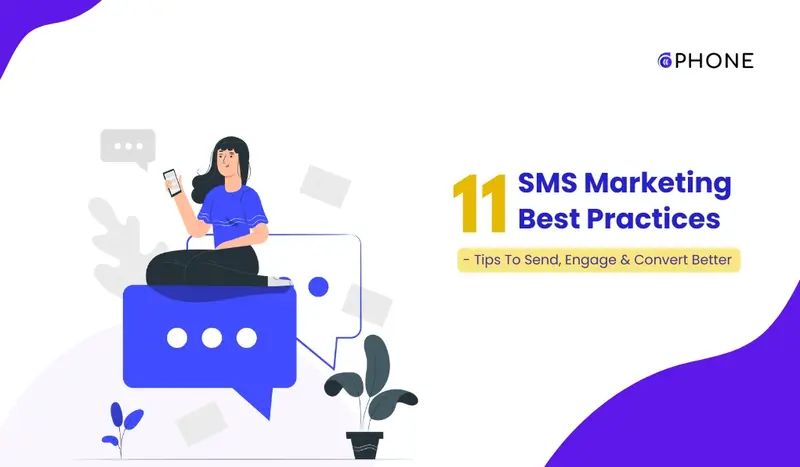
SMS marketing remains as relevant and powerful as ever. Why?
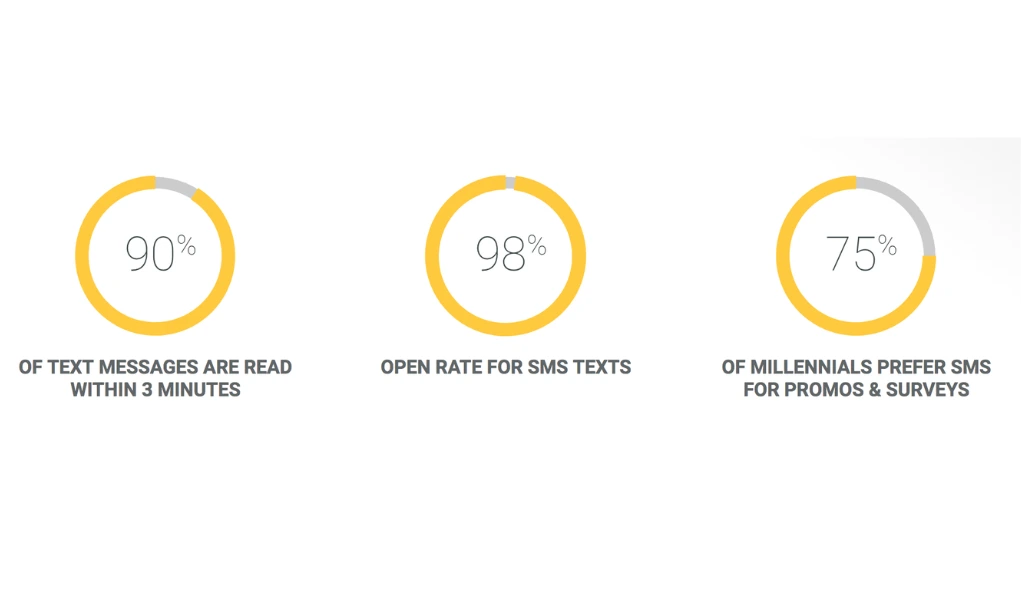
It delivers messages directly to customers’ hands—quite literally.
Despite the growth of various digital platforms, SMS continues to thrive as a high-engagement channel.
Because like emails or social media posts they can’t get buried or overlooked.
What makes it even better? It doesn’t rely on an internet connection. As long as someone has a mobile phone, they can receive your message.
Making it one of the most reliable and accessible communication methods available today.
Let’s dive into what SMS marketing is, its benefits, and how it can revolutionize your marketing strategy.
Despite the growth of various digital platforms, SMS continues to thrive as a high-engagement channel.
Because like emails or social media posts they can’t get buried or overlooked.
What makes it even better? It doesn’t rely on an internet connection. As long as someone has a mobile phone, they can receive your message.
Making it one of the most reliable and accessible communication methods available today.
Let’s dive into what SMS marketing is, its benefits, and how it can revolutionize your marketing strategy.
Table of Contents:
What is SMS Marketing?
SMS marketing is the practice of sending promotional or informational messages to customers and prospects via text messages.
These messages are typically short, concise, and designed to deliver value immediately.
SMS marketing can serve a variety of purposes:
These messages are typically short, concise, and designed to deliver value immediately.
SMS marketing can serve a variety of purposes:
- Announcing new products or sales.
- Sending personalized offers or discounts.
- Providing timely updates or alerts.
- Delivering order confirmations and reminders.
- Engaging with customers through surveys or feedback requests.
Whether you're sending promotional offers, reminders, or updates, SMS ensures your message gets seen and acted upon.
Benefits of SMS Marketing
- High Open Rates: With a 98% open rate, SMS ensures your message is seen, making it perfect for time-sensitive campaigns.
- Broad Reach: Works on any mobile phone, no app or internet needed.
- Cost-Effective: High ROI at a low cost, ideal for businesses of all sizes.
- Two-Way Communication: Customers can reply to messages, participate in surveys, or confirm appointments.
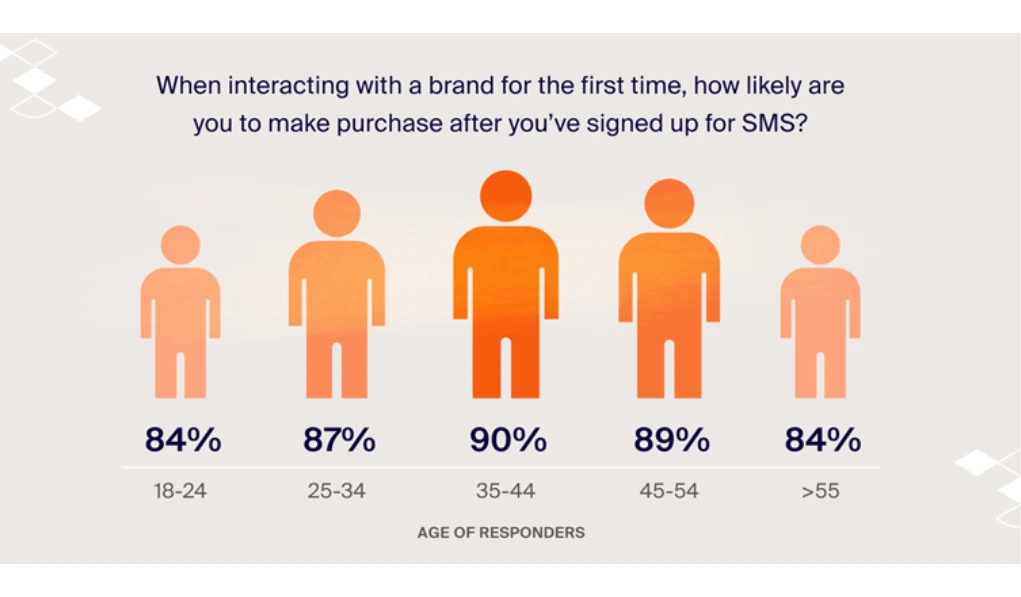
When used effectively, SMS marketing can help businesses create meaningful connections, drive engagement, and achieve remarkable ROI.
Pair it with email campaigns, social media promotions, or loyalty programs for a comprehensive strategy.
Pair it with email campaigns, social media promotions, or loyalty programs for a comprehensive strategy.
11 SMS Marketing Best Practices For Better ROI
1. Set Clear, Realistic Goals- Track the right KPIs
Before sending a single text, define what you want to achieve.
Are you trying to increase sales? Improve brand awareness? Drive traffic to your website?
Setting clear, realistic goals is essential for guiding your SMS campaigns and measuring success.
How to do it:
Are you trying to increase sales? Improve brand awareness? Drive traffic to your website?
Setting clear, realistic goals is essential for guiding your SMS campaigns and measuring success.
How to do it:
- Define SMART goals (Specific, Measurable, Achievable, Relevant, Time-bound).
- Track relevant KPIs like conversion rates, click-through rates, unsubscribe rates, and response rates to measure the effectiveness of your campaigns.

- Use A/B testing to experiment with different messages, offers, and times to refine your approach.
Clear goals ensure that every message you send has a purpose and contributes to your broader marketing strategy.
Clear goals keep your campaigns focused, while analytics help refine them over time.
Clear goals keep your campaigns focused, while analytics help refine them over time.
2. Analytics- Your Best Friend
Analytics are your best friend when it comes to SMS marketing.
Analyze past campaign performance to understand what resonates with your audience. Are your offers driving action? What time do recipients engage most?
How to do it:
Analyze past campaign performance to understand what resonates with your audience. Are your offers driving action? What time do recipients engage most?
How to do it:
- Monitor open rates, click-through rates and conversions.
- Identify the best times to send messages.
- Optimize content based on past campaign performance. If you notice higher engagement with certain types of offers or at specific times, incorporate that into future campaigns.
- Use customer segmentation to analyze different groups (age, location, purchase history) and tailor your messages to what resonates best with each group.
They offer actionable insights into how well your campaigns are performing and allow you to adjust based on real-time data.
This can help you improve the performance of your SMS campaigns over time.
Pro Tip: Use A/B testing to refine your messages, timing, and call-to-actions based on real data.
This can help you improve the performance of your SMS campaigns over time.
Pro Tip: Use A/B testing to refine your messages, timing, and call-to-actions based on real data.
3. Prioritize Personalization and Segmentation
Generic mass texts are a thing of the past. Modern SMS campaigns thrive on personalization and precise audience segmentation, helping you deliver messages that feel tailored and relevant.
How to do it:
How to do it:
- Segment your audience: Divide your audience based on factors like demographics, purchase behavior, engagement history, or product preferences. For example, send VIP customers exclusive offers while targeting first-time buyers with welcome discounts.
- Personalize messages: Go beyond using the recipient’s name. Send messages relevant to their interests, such as a reminder about a sale on a category they’ve browsed or updates about items left in their cart.
- Behavioral targeting: Trigger messages based on user actions like signing up, completing a purchase, or abandoning a cart. For instance, "You forgot something! Complete your order now for 10% off."
- Location-based messaging: Send geo-targeted offers like "Visit our NYC store this weekend for an exclusive in-store discount!"
Pro Tip: You can use tools like ClearoutPhone to find out insights on your contact list including their geolocation, timezone, carrier-type, line-type and more. All this data can help segment and validate your contact list for better personalization.
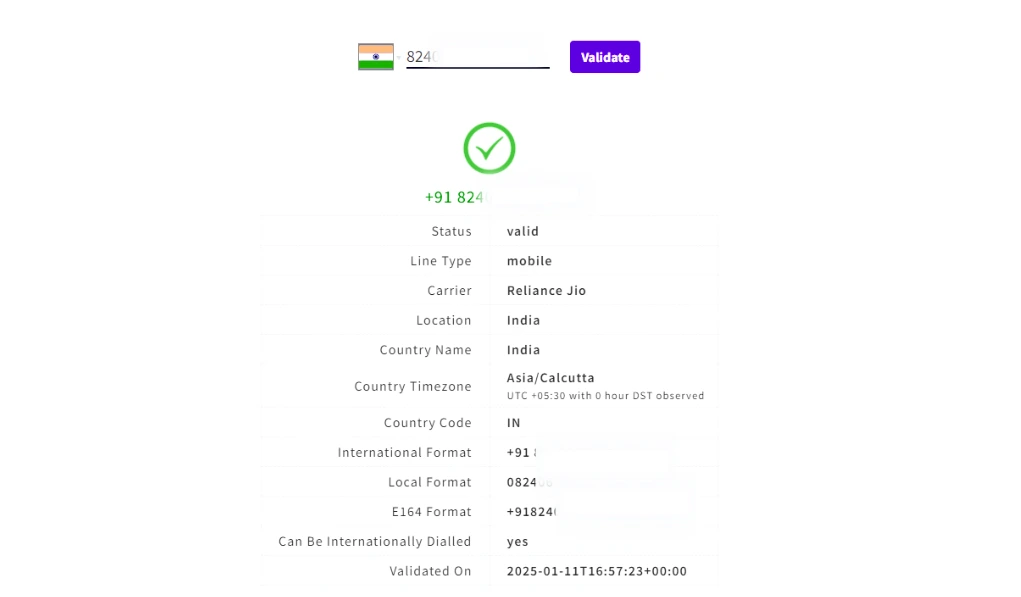
4. Craft SMS That Spark Interest (Relevant, Unique, and Valuable)
An SMS has only a few words to capture attention, so make sure each message is compelling, relevant, and valuable.
The key is to make the message stand out and create urgency or curiosity.
How to do it:
The key is to make the message stand out and create urgency or curiosity.
How to do it:
- Personalize your messages: Use the recipient's name, reference their past purchases, or offer them tailored deals based on their preferences.
- Create a sense of urgency: Phrases like “limited time,” “last chance,” or “only a few left” push customers to act immediately.
- Compelling: Highlight benefits over features. Instead of "New product launched," try "Be the first to grab our new gadget at 20% off!"
- Keep it clear and concise: While SMS is brief, clarity is essential. Stick to one main message or offer per text.
- Use eye-catching deals: Offer exclusive discounts, flash sales, or VIP access to special events.
- Incorporate visuals: Include images, GIFs,or links to product pages to make the SMS more visually engaging and interactive.
Every message should provide immediate value—in a sea of notifications, make every word count.
5. Perfect The Timing and Frequency
Timing is everything in SMS marketing. Sending messages at the right time can dramatically increase engagement and conversion rates. Frequency also matters; too many texts can lead to annoyance, while too few can make you forgettable.
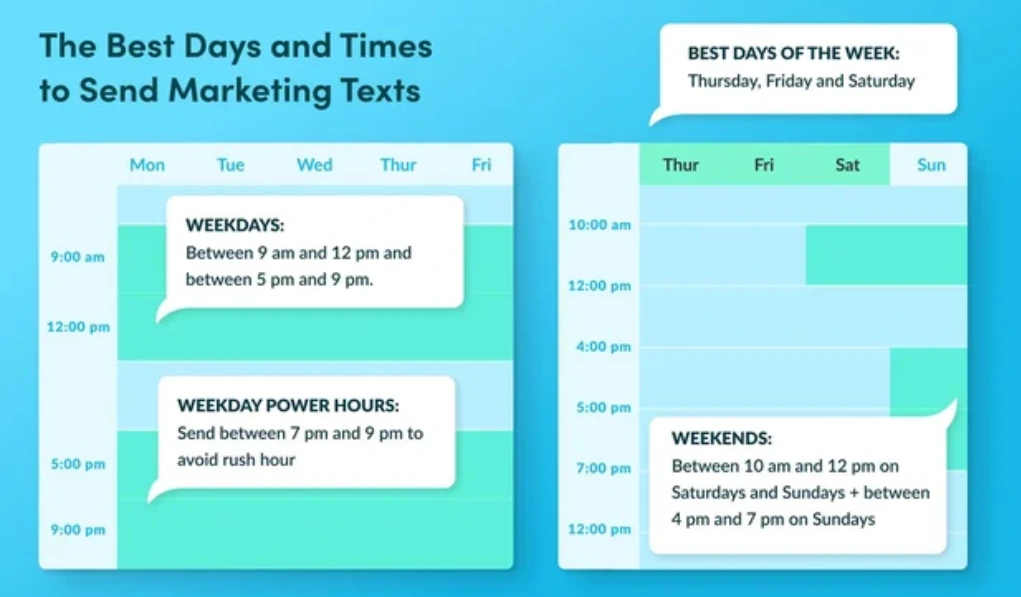
How to do it:
- Send During Business Hours: Avoid early mornings or late nights.
- Avoid Over-Messaging: Stick to a manageable frequency (1-3 texts per week). Too many messages can annoy customers and increase opt-out rates
- Leverage Peak Engagement Times: Lunch breaks (12-2 PM) or early evenings (5-7 PM) often see higher response rates.
- Test and optimize: Experiment with sending SMS at different times to determine when your audience engages the most.
Pro Tip: Send automated SMS based on customer actions, such as abandoned cart reminders or birthday discounts. These messages feel relevant and timely.
6. Go Beyond SMS: Integrate With Social Media Channels
Don’t let your SMS efforts exist in isolation. Link them with your social media campaigns to amplify their impact.
Use SMS to promote Instagram contests or share teaser links to exclusive content on YouTube.
How to do it:
Use SMS to promote Instagram contests or share teaser links to exclusive content on YouTube.
How to do it:
- Cross-promote offers: Use SMS to drive traffic to your social media channels. For example, "Follow us on Instagram for exclusive deals."
- Link social media contests to SMS: Encourage customers to sign up via SMS for contest entries or discounts, increasing cross-platform engagement.
- Share exclusive content: Use SMS to direct customers to limited-time social media content, such as behind-the-scenes videos or product launches.
- Use hashtags or social media handles in SMS: Encourage customers to use a specific hashtag or tag your brand on social media.
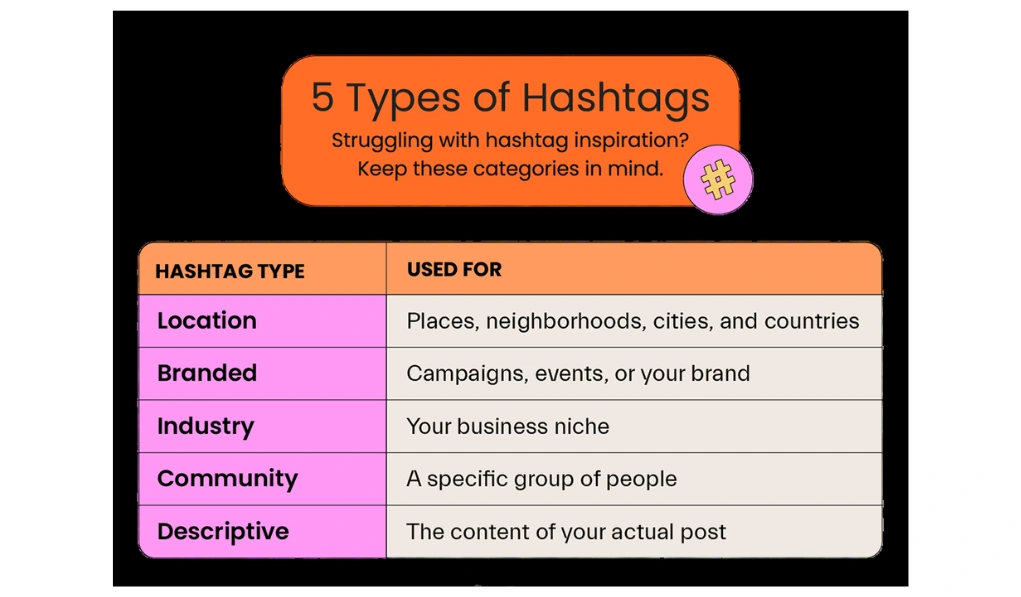
Cross-platform engagement helps you reach more people, boost brand visibility, build better connections and higher conversions.
7. Show Off Your Brand, Make a Statement
SMS is a great opportunity to communicate your brand’s personality. Whether you're fun, professional, or quirky, your tone should be consistent with your overall branding.
How to do it:
How to do it:
- Keep it consistent: Use the same language, tone, and style in your SMS that you use across all marketing channels.
- Showcase your values: Use SMS to promote your company’s mission, values, or community efforts. For example, a sustainable brand could use SMS to announce eco-friendly initiatives or products.
- Be engaging, not pushy: Rather than just selling, SMS can also be a way to build a relationship with your audience. For example, a brand could share exclusive behind-the-scenes content or offer a sneak peek of upcoming releases.
Pro Tip: Add a recognizable sender ID to make your texts feel familiar and trustworthy.
This will enhance credibility and strengthen customer relationships.
This will enhance credibility and strengthen customer relationships.
8. Experiment With A/B Testing: Better Your Campaign
A/B testing allows you to optimize your SMS campaigns by comparing two variations of a message to see which performs better.

Testing different elements such as wording, timing, or CTAs can help you refine your approach.
How to do it:
How to do it:
- Test different elements: Experiment with different SMS copy, subject lines, call-to-action phrases, or even the time of day messages are sent.
- Use small samples: Test on a subset of your audience to find what works best.
- Analyze results: Focus on metrics like open rates, click-through rates, and conversion rates to identify what works well.
- Iterate continuously: Regularly run A/B tests to improve future campaigns and stay aligned with what your audience prefers.
By continually testing and refining your SMS messages, you’ll find what resonates best with your audience and enhance the effectiveness of your campaigns.
9. Leverage Automation for Smarter Campaigns
Automation can transform your SMS marketing from manual blasts to intelligent, behavior-driven campaigns that work around the clock.
Automating your SMS campaigns ensures timely, relevant messages while saving time and improving engagement. All of this leads to better customer retention and ROI.
Automating your SMS campaigns ensures timely, relevant messages while saving time and improving engagement. All of this leads to better customer retention and ROI.

How to do it:
- Drip campaigns: Set up automated sequences like welcome series, post-purchase follow-ups, or re-engagement texts. Example: A three-part welcome SMS series introducing your brand, offering a discount, and sharing product recommendations.
- Behavior-based triggers: Send SMS messages triggered by customer actions, such as cart abandonment or order confirmation. Example: "Still thinking it over? Complete your purchase today and enjoy free shipping."
- Time-sensitive reminders: Automate event reminders, sale countdowns, or subscription renewal prompts. Example: "Hurry! Your exclusive 20% offer expires tonight!"
- Seamless tool integration: Sync your SMS platform with your CRM or eCommerce system (like Shopify or HubSpot) for real-time data automation.
10. Ensure Compliance With SMS Marketing Regulations
SMS compliance isn’t just a legal necessity—it’s crucial for maintaining trust and protecting your brand’s reputation. Regulations like TCPA, GDPR, and CAN-SPAM exist to safeguard consumer privacy.

How to do it:
- Obtain Explicit Consent: Always secure opt-in consent before sending promotional texts. Use clear language like “Text YES to receive exclusive offers.”
- Provide Opt-Out Options: Every message should have a clear and easy opt-out, such as “Reply STOP to unsubscribe.”
- Keep Consent Records: Maintain documentation of when and how consent was given to avoid potential legal issues.
- Limit Message Frequency: Avoid overwhelming subscribers—stick to a consistent, respectful messaging schedule (e.g., 1-3 messages per week).
- Stay Updated on Regulations: Different regions have unique SMS laws. Keep your legal team informed on the latest rules in your target markets.
Why it matters: Based on your contact list, following national & international SMS marketing rules & regulations is not only a legal necessity but also builds trust with your audience, reduces opt-out rates, and safeguards your brand from hefty fines.
11. Include QR Codes and URLs: Simplify Access
QR codes and URLs streamline the user journey, reduce friction, and encourage faster interactions—whether it’s making a purchase, registering for an event, or exploring your latest products.
Hence, adding QR codes and shortened URLs in your SMS campaigns can significantly boost engagement by making it easier for recipients to take action instantly.
Hence, adding QR codes and shortened URLs in your SMS campaigns can significantly boost engagement by making it easier for recipients to take action instantly.
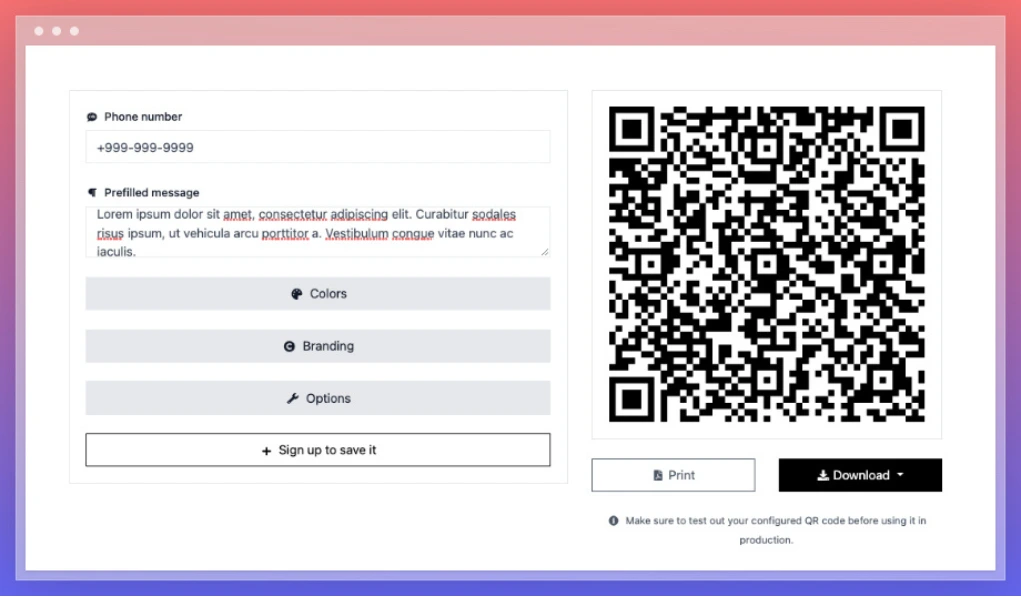
How to do it:
- Add QR Codes for Quick Access: Use QR codes for instant access to product pages, event registrations, or special offers. For example, "Scan this QR code to claim your 20% discount now!"
- Shortened URLs for Simplicity: Include shortened links using tools like Bitly to keep your messages clean and professional. Example: "Shop the sale: bit.ly/sale2025."
- Trackable Links: Use trackable URLs to monitor click-through rates and measure campaign success.
- Exclusive Landing Pages: Link to dedicated landing pages designed for SMS traffic, ensuring a cohesive user experience.
5 SMS Marketing Mistakes You Should Avoid (If You Want Results)
Let’s be real—SMS marketing can work wonders. But only when done right. If you're wondering why your campaigns aren't delivering the impact you hoped for, you might be making one (or more) of these common mistakes. Let’s break them down and how you can fix them.
1. Targeting Inactive or Incorrect Numbers
Imagine planning a big SMS campaign and half your messages bounce back. This happens when your contact list includes outdated or invalid numbers—something that can easily be avoided.
Why is this bad?
Why is this bad?
- You're wasting money on undeliverable messages.
- Your sender reputation can take a hit, reducing future campaign deliverability.
✅ Quick Fix:
- Use a phone validation tool to clean your list before every campaign.
- Remove unresponsive or invalid numbers regularly.
- Consider double opt-in for new contacts to ensure quality leads.
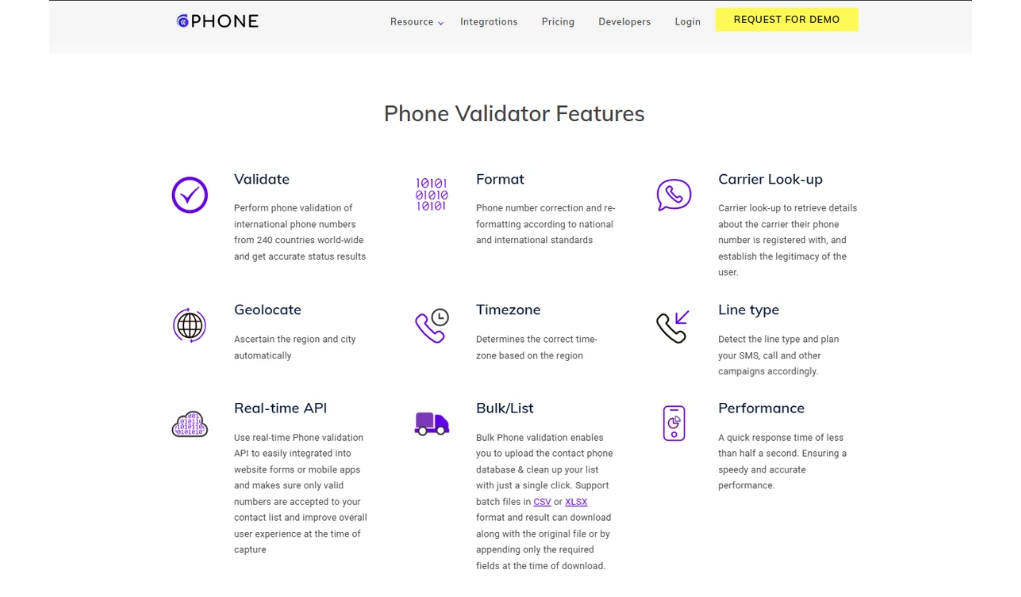
2. High Opt-Out Rates? Red Flag!
Seeing people unsubscribe faster than they sign up?
That's a sign you're either messaging too often or the content isn’t resonating.
Why people opt out:
That's a sign you're either messaging too often or the content isn’t resonating.
Why people opt out:
- Receiving too many messages (nobody likes being spammed!).
- The messages feel irrelevant or repetitive.
- No clear value or benefit in the texts.
✅ Quick Fix:
- Stick to 1-3 texts per week (unless it's a flash sale).
- Share valuable content—exclusive deals, early access, or useful reminders.
- Offer an easy opt-out option ("Reply STOP to unsubscribe") and track when the rates spike.
👉 Example: A beauty brand reduced opt-outs by 15% after shifting from daily texts to twice-a-week messages focusing on VIP offers.
3. Lack of Personalization = Ignored Messages
Nobody wants to feel like just another name on a list. Sending generic messages like "Hey! Check out our sale!" makes your brand forgettable.
Why it matters:
Why it matters:
- Personalized texts generate 6x higher engagement.
- Customers expect tailored experiences—80% are more likely to buy from brands that personalize communication.
✅ Quick Fix:
- Use the recipient's name in your messages.
- Reference past purchases or browsing behavior.
- Segment your list (e.g., new subscribers vs. loyal customers) and tailor offers accordingly.
👉 Example: Instead of "Get 20% off today!", try "Hi Sarah! Enjoy 20% off your favorite skincare range today—click here to shop now."
4. Ignoring Timing and Frequency
Would you want a marketing text waking you up at 2 a.m.?
Probably not. Timing matters—a lot.
Send messages when your audience is most likely to engage, and don’t overdo it.
Common timing mistakes:
Probably not. Timing matters—a lot.
Send messages when your audience is most likely to engage, and don’t overdo it.
Common timing mistakes:
- Sending texts too early or late.
- Messaging during busy hours when people won’t check their phones.
- Bombarding your audience with too many texts too quickly.
✅ Quick Fix:
- Stick to business hours (10 a.m. – 7 p.m.).
- Test different times to find when your audience is most responsive.
- Limit messages to 1-3 per week unless running a limited-time campaign.
5. Using Clickbait or Misleading Language
“🎉 CLAIM YOUR FREE PRIZE – ONLY 1 LEFT! 🚨”
Sound familiar? Sure, it might grab attention—but at the cost of trust. Misleading language can lead to unsubscribes, spam complaints, and even legal trouble.
Why it backfires:
Sound familiar? Sure, it might grab attention—but at the cost of trust. Misleading language can lead to unsubscribes, spam complaints, and even legal trouble.
Why it backfires:
- Damages your brand’s credibility.
- You risk getting flagged as spam.
- Violates SMS marketing laws (like TCPA).
✅ Quick Fix:
- Be clear and honest with your message.
- Highlight the real value—“Flash Sale: Save 30% today only!”
- Avoid over-promising or vague claims.
👉 Example: Instead of "Win a $100 Gift Card Now!", say "🎁 Enter now for a chance to win a $100 gift card. Tap here to join the giveaway."
Which SMS Marketing Strategy is Best For You?
SMS marketing works when done right. Focus on quality and verified contacts, personalized messages, perfect timing, and honesty to keep your audience engaged and trusting your brand.
Remember, the goal is to build strong, long-term relationships with your customers—not just push sales.
By avoiding common mistakes and implementing effective strategies, you’ll be able to enhance your messaging, increase engagement, and boost conversions. Every message you send is an opportunity to connect with your audience, so make it count!
Now, it's your turn. Take these insights, apply them to your next campaign, and watch your SMS marketing efforts soar.
Remember, the goal is to build strong, long-term relationships with your customers—not just push sales.
By avoiding common mistakes and implementing effective strategies, you’ll be able to enhance your messaging, increase engagement, and boost conversions. Every message you send is an opportunity to connect with your audience, so make it count!
Now, it's your turn. Take these insights, apply them to your next campaign, and watch your SMS marketing efforts soar.
SMS Marketing FAQs
1. What is SMS marketing strategy?
SMS marketing strategy refers to the plan and approach businesses use to send text messages to customers for promotional purposes, customer service, or engagement. It includes defining goals, targeting the right audience, personalizing messages, and analyzing performance.
2. What are the rules for SMS marketing?
SMS marketing rules vary by country, but key U.S. regulations include obtaining prior consent from recipients (opt-in), providing clear opt-out instructions, and adhering to quiet hours (no texts before 8 a.m. or after 9 p.m. in the recipient's time zone).
3. How to do an effective SMS campaign?
To run an effective SMS campaign, start by building a quality contact list, create personalized and valuable messages, ensure clear call-to-actions (CTAs), and test timing and frequency to optimize engagement.
4. What is 2-way SMS marketing?
2-way SMS marketing allows for interactive communication between the brand and the recipient. Customers can respond to messages, and businesses can engage in real-time conversations, improving customer service and personalization.
5. Is SMS blasting illegal?
SMS blasting can be illegal if you send unsolicited messages or violate consent rules, such as not having proper opt-ins or ignoring the opt-out option. Always follow legal guidelines and respect privacy regulations to avoid penalties.
Search
Recent Posts
- Boost SMS Marketing with Carrier & Line-Type Segmentation November 27, 2025
- 7 Proven Ways to Reduce SMS Marketing Costs and Boost ROI October 23, 2025
- 5 Best SMS Marketing Platforms in 2025 (Our Top Picks) August 28, 2025
- How to Send Bulk SMS in 2025: Step-by-Step Guide That Works August 18, 2025
- The Ultimate Guide to SMS Automation (2025 Edition) June 5, 2025
Phone Validation Service
Reach out to more real customers for your business
Create a free account with 100 credits
